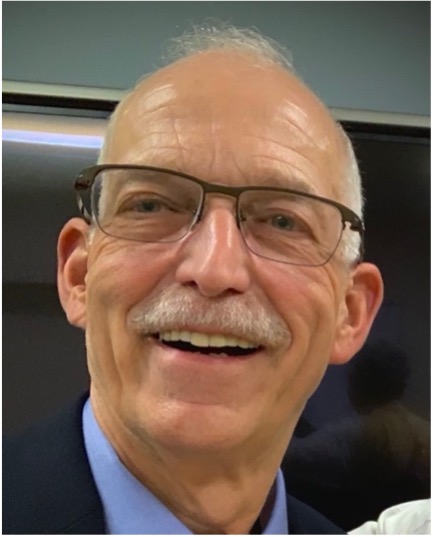
The 2021 Karl Meyer Award was presented to Dr. John A. Hanover, Chief of the Laboratory of Cell and Molecular Biology (LCMB) at the National Institute of Diabetes, Digestive and Kidney Diseases (NIDDK) of the National Institutes of Health; Director of the NIDDK Genomics Core; and Chief of the Cell Biochemistry Section within the LCMB. John did his graduate work with Bill Lennarz (2004 Karl Meyer Awardee) at Johns Hopkins, significantly contributing to the understanding of the early steps in the biogenesis of N- and O-linked glycosylation. He did his postdoctoral work with Ira Pastan at the National Cancer Institute, studying the pathways of receptor-mediated endocytosis and the mechanisms of human multiple drug resistance mediated by the highly glycosylated multiple drug resistance channels. He embarked on his own research program as Principal Investigator in 1983 and in 1985 moved to NIDDK where he became Chief of Laboratory of Cell Biochemistry and Biology in 1994 and Chief of the LCMB in 2010. Since 2012 he has also served as Director of the NIDDK Genomics Core Facility.
John has made many critical contributions to the field of glycobiology, publishing numerous peer-reviewed articles, reviews, commentaries, and books. His work on the compartmentalization of glycoprotein biogenesis and the degradation pathways in eukaryotic cells laid the groundwork for his subsequent independent research efforts. As principal investigator, he embarked on an ambitious program to determine whether glycosylation was restricted to the endomembrane system. Gerald Hart had previously found evidence for proteins terminating in O-linked GlcNAc on the surface of lymphocytes. Hanover applied a technique he had developed as a graduate student, the use of soluble galactosyltransferase as a probe for terminal GlcNAc, to determine the subcellular location of the O-linked GlcNAc modification. In nearly simultaneous publications, Hanover and Hart independently showed O-GlcNAc is present in both nucleus and cytoplasm and is particularly abundant on nuclear pores. Following up on these observations, Hanover’s lab purified, cloned and sequenced the first mammalian nucleoporin (Nup62), thus defining both the sites of O-GlcNAc addition and the now canonic ‘nucleoporin motif, GFXFG’. His continuation of this program on the O-GlcNAc modified nucleoporins (NUPs) had significant impact on multiple fields including aging and neurodegeneration.
John’s work on O-GlcNAc that began in 1984 has been particularly noteworthy as evidenced by circa 90 publications on that topic alone. In 1997, he cloned and sequenced the human and C. elegans OGT, published back-to-back with Gerald Hart’s identification of rat OGT. These landmark papers by the Hart and Hanover labs have led to an explosion of research on O-GlcNAc and its many targets. John’s work has subsequently focused on the role of O-GlcNAc in epigenetic regulation of gene expression and diseases of aging including diabetes and neurodegeneration.
Of equal value to the science has been John’s service as an advocate for the field of glycobiology. He served as the leader for the glycans in the Disease and Development Subgroup of the Consortium for Functional Glycomics since the inception of the consortium subgroups and was reelected for that role upon reorganization in 2013. He is now on the steering committee of the National Center for Functional Glycomics (NCFG). Along with Kelly Ten Hagen, he serves as the Society for Glycobiology’s representative to the International Glycoconjugate Organization (IGO). He has also been involved in helping to organize Glycobiology Gordon Conferences, Glycobiology Society meetings, and IGO GLYCO meetings over many years of participation in those conferences. More generally, he has participated on numerous review panels for the NIH, NSF, and FDA. Most recently, he chaired the “Common Fund” Review panel in efforts to establish “Novel and Innovative tools”, and “Adapt Novel tools” to advance Glycoscience. He also chaired the NIH Common Fund Glycoscience Program Workshop: Exploring the Biology of O-GlcNAc. He has been an active member of the Society for Glycobiology since its inception and was previously a member of the Society for Complex Carbohydrates where he participated as a keynote speaker and session organizer for those meetings.
John has been a particularly effective contributor to advancement of the glycosciences within the intramural NIH community. He has served as a mentor for many young scientists beginning their careers in the intramural community, training the next generation of researchers in glycobiology and cell biology, many of whom have gone on to pursue active independent research programs. In conjunction with Drs. Gilbert Ashwell and Vince Hascall, he helped to establish the intramural Glycobiology Interest group (Now Glycoscience Interest Group) and has more recently served on the advisory committee of the NIH FDA Glycoscience Interest group. He also spearheaded the effort to establish the highly successful course in the glycosciences that is taught on a continuing basis and was one of the !rst courses in the country dedicated solely to training in the glycosciences. In 2016, he co-Chaired the highly successful Glycoday 2016 at the NIH, bringing together NIH Program staff with leading Glycoscientists in the intramural program and from across the world. He continues his support of NIH intramural glycosciences and has become well recognized at meetings for his insightful questions on diverse topics in the glycosciences.
John’s major scientific accomplishments in the field of glycobiology, proven record of mentorship and decades long service to the international glycoscience community make him highly deserving of the Karl Meyer Lectureship Award, the highest award given by the Society for Glycobiology.